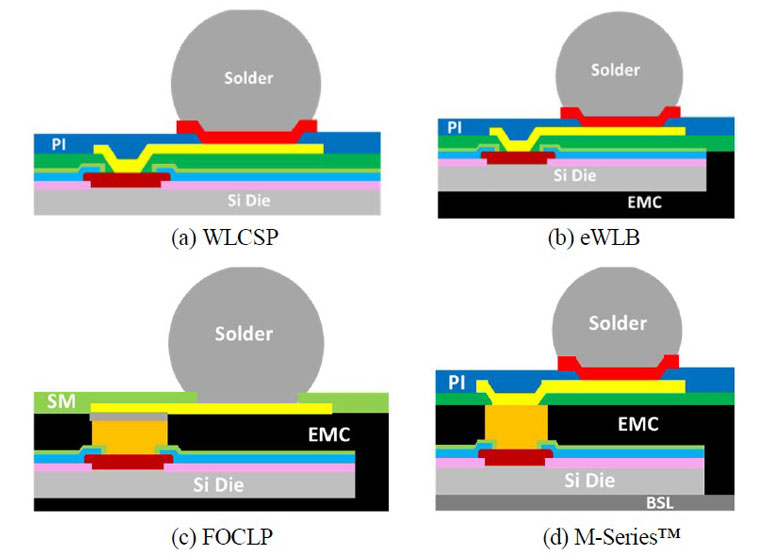
Blog
Effect of Novel SAC-Bi Solder Joints on Electromigration Reliability for Wafer Level Chip Scale Packages
Min-Yan Tsai; Yung-Sheng Lin; Chin-Li Kao; Shan-Bo Wang; Ting-Chun Lin; Yun-Ching Hung
The Sn-4Ag-0.5Cu base solder adding 3 wt.% bismuth (SAC-3Bi) solder has better drop and thermal cycling performance than Sn-4Ag-0.5Cu solder due the excellent mechanical properties in previous study. Therefore, SAC-3Bi has applied in solder joints of wafer level chip scale packaging (WLCSP) in recent year. In this study, SAC-3Bi solder was used on WLCSP device to evaluate electromigration reliability. A specially designed test vehicle for SAC-3Bi solder balls with 200μm diameter Ti/Cu/Cu UBM have been investigated experimentally. The electromigration behavior of solder balls was investigated in terms of the electrical resistance change, and the mechanism was also explored by the microstructure evolutions. The electromigration experiment of the SAC-3Bi solder balls was conducted continuously at 1.2 A to 1.6 A under 170 °C to 185 °C condition. The resistance of solder balls was monitored according to Kelvin structure. An EM prediction model of SAC-3Bi solder balls was built based on Black-type electromigration time to failure equation, followed the JEDEC with five test conditions. The activation energy of SAC-3Bi solder is 0.80 eV ± 0.02 eV, coinciding the activation energy of SAC based solder alloy (0.72 eV ~ 0.89 eV). The microstructure of the solder balls was investigated using a scanning electron microscope (SEM) accompanying energy-dispersive X-ray spectroscopy (EDS) and electron backscatter diffraction (EBSD) for the failure behaviors and phase characterization. There were intermetallic compounds of Cu3Sn and Cu6Sn5 at the interface of copper and solder. We observed two failure modes of SAC-3Bi solder balls during current stressing, the fracture occurred at the UBM/solder ball interface and Cu redistribution layer (RDL), respectively. The failure mechanisms have been investigated in detail from microstructure analysis.
Published in: International Symposium on Microelectronics (2021) 2021 (1): 000136–000141
